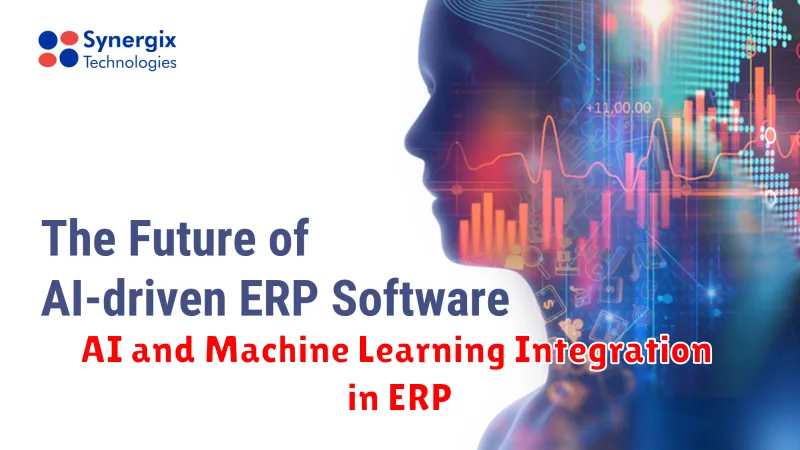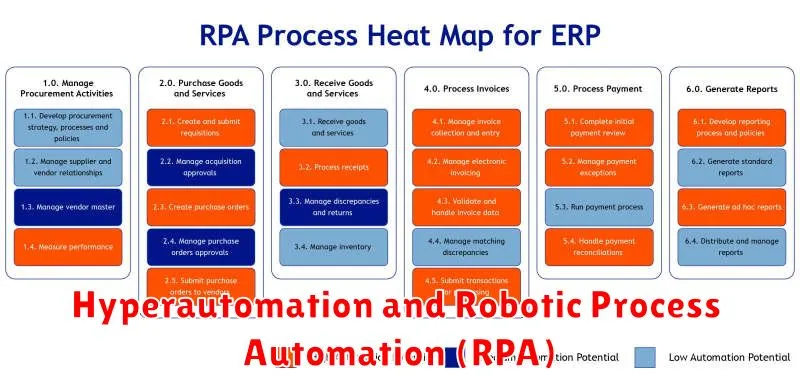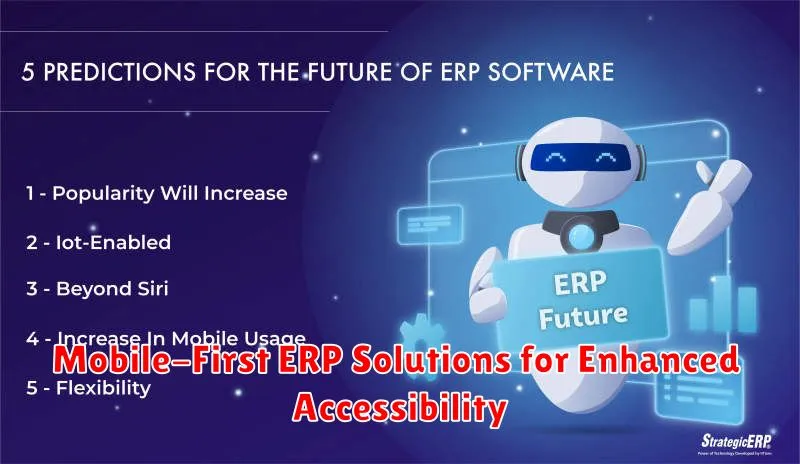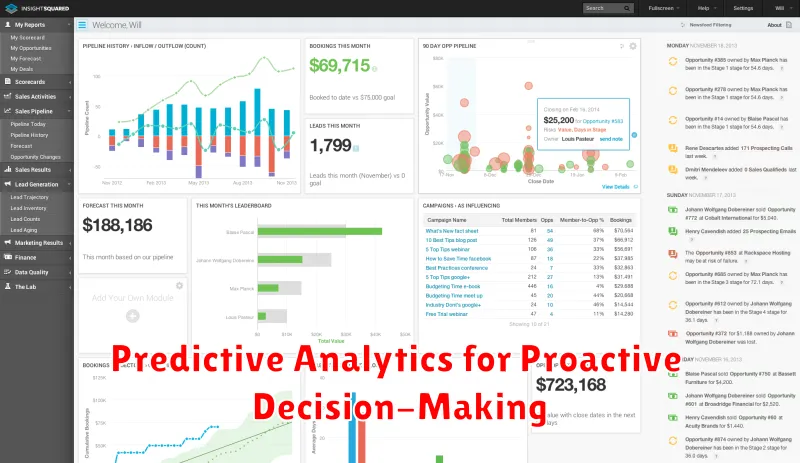In the ever-evolving world of business, staying ahead of the curve is critical. This is especially true when it comes to enterprise resource planning (ERP), the backbone of many organizations. As we enter 2024, the ERP landscape is undergoing a dramatic transformation, driven by advancements in technology and evolving business needs. This article will explore the key trends and innovations shaping the future of ERP, from the rise of cloud-based solutions to the integration of artificial intelligence (AI) and the adoption of blockchain technology.
Cloud Computing and SaaS ERP Dominance
The business landscape is undergoing a rapid transformation driven by technological advancements, particularly in the realm of cloud computing. This paradigm shift has profoundly impacted the way businesses operate, with Software as a Service (SaaS) emerging as a dominant force in enterprise resource planning (ERP). This article delves into the dynamic relationship between cloud computing and SaaS ERP, exploring its implications and the compelling reasons why businesses are embracing this transformative combination.
The Rise of Cloud Computing
Cloud computing has revolutionized the way businesses access and manage their IT infrastructure. By leveraging remote servers and data centers, organizations can access software applications, storage, and processing power over the internet. This model eliminates the need for on-premise hardware and software, significantly reducing costs, increasing flexibility, and enhancing scalability.
SaaS ERP: A Perfect Match for Cloud Computing
The synergy between cloud computing and SaaS ERP is undeniable. SaaS ERP systems are designed to be deployed and accessed through the cloud, seamlessly integrating with the advantages offered by this computing model. This integration fosters numerous benefits for businesses:
- Cost-Effectiveness: SaaS ERP solutions eliminate the hefty upfront capital investments associated with traditional on-premise systems. Instead, businesses pay a recurring subscription fee, which can be more budget-friendly, especially for smaller organizations.
- Enhanced Scalability: Cloud-based SaaS ERP systems provide effortless scalability, allowing businesses to adapt their resource allocation as their needs evolve. Whether they experience growth or decline, they can easily adjust their ERP capabilities without significant infrastructure changes.
- Accessibility and Mobility: SaaS ERP systems can be accessed from any device with an internet connection, empowering employees to work from anywhere at any time. This enhances productivity and collaboration, regardless of location.
- Regular Updates and Maintenance: SaaS ERP providers handle updates and maintenance, ensuring that businesses always have access to the latest features and security patches. This eliminates the burden of in-house IT management, allowing businesses to focus on core operations.
The Future of ERP: A Cloud-First Approach
The future of ERP is inextricably linked to cloud computing. As businesses continue to embrace digital transformation, the demand for scalable, agile, and cost-effective solutions will drive the adoption of cloud-based SaaS ERP systems. The benefits of this approach, ranging from reduced costs to improved agility, are too significant to ignore.
Conclusion
The confluence of cloud computing and SaaS ERP marks a watershed moment in the evolution of enterprise resource planning. Businesses are leveraging this powerful combination to streamline operations, enhance efficiency, and achieve significant cost savings. The future of ERP lies in the cloud, where scalability, accessibility, and continuous innovation are the hallmarks of success.
AI and Machine Learning Integration in ERP

The integration of Artificial Intelligence (AI) and Machine Learning (ML) into Enterprise Resource Planning (ERP) systems is revolutionizing the way businesses operate. This convergence is enabling organizations to automate tasks, optimize processes, and gain valuable insights from their data, ultimately leading to improved efficiency, profitability, and customer satisfaction.
AI and ML algorithms can analyze vast amounts of data from various ERP modules, including finance, sales, inventory, and human resources. By identifying patterns and trends, these technologies can provide valuable insights that support better decision-making. For example, AI-powered predictive analytics can forecast demand, optimize pricing strategies, and identify potential risks.
One of the most significant benefits of AI and ML integration is the automation of repetitive tasks. AI-powered chatbots can handle customer inquiries, freeing up human agents to focus on more complex tasks. ML algorithms can automate invoice processing, data entry, and other time-consuming activities. This automation not only increases efficiency but also reduces the potential for human error.
Moreover, AI and ML can enhance the accuracy and efficiency of ERP processes. For example, AI-powered fraud detection systems can analyze transaction data in real-time to identify and prevent fraudulent activities. ML algorithms can optimize inventory management by predicting demand fluctuations and minimizing stockouts or overstocking.
The integration of AI and ML into ERP systems is still in its early stages, but the potential benefits are enormous. By leveraging these technologies, businesses can gain a competitive edge by improving operational efficiency, reducing costs, and enhancing customer experiences.
Hyperautomation and Robotic Process Automation (RPA)

In today’s fast-paced business environment, organizations are constantly seeking ways to optimize their operations and gain a competitive edge. Two technologies that have emerged as key enablers of efficiency and automation are hyperautomation and Robotic Process Automation (RPA). While often used interchangeably, these terms represent distinct but complementary approaches to automating tasks.
Robotic Process Automation (RPA)
RPA refers to the use of software robots or bots to automate repetitive, rule-based tasks that are typically performed by humans. These bots can interact with applications and systems just like human users, performing tasks such as data entry, data extraction, and transaction processing. RPA is particularly effective in automating high-volume, low-complexity tasks that are prone to human error.
Hyperautomation
Hyperautomation takes automation a step further by encompassing a broader range of technologies and processes. It goes beyond simply automating individual tasks and aims to automate entire business processes end-to-end. This includes integrating RPA with other technologies such as Artificial Intelligence (AI), machine learning (ML), and process mining.
Hyperautomation involves identifying and automating all possible processes, including those that are complex, unstructured, or involve human judgment. It also leverages AI and ML to enhance decision-making, improve accuracy, and adapt to changing business needs.
Key Differences
The key difference between RPA and hyperautomation lies in their scope and complexity. RPA focuses on automating individual tasks, while hyperautomation aims to automate entire processes, leveraging a wider range of technologies.
Another distinction is that RPA is typically rule-based, while hyperautomation incorporates AI and ML to handle more complex and unstructured tasks. RPA is often the starting point for hyperautomation, as it can lay the foundation for more advanced automation initiatives.
Benefits
Both RPA and hyperautomation offer numerous benefits to organizations, including:
- Increased efficiency and productivity
- Reduced costs
- Improved accuracy and quality
- Enhanced customer experience
- Increased agility and responsiveness
- Compliance and risk mitigation
Conclusion
Hyperautomation and RPA are powerful tools for organizations looking to transform their operations and achieve digital transformation. While RPA focuses on automating individual tasks, hyperautomation takes a holistic approach, automating entire processes and leveraging a wider range of technologies to unlock greater value. By embracing these technologies, businesses can unlock new levels of efficiency, productivity, and innovation.
Data Analytics and Business Intelligence Advancements
In today’s data-driven world, organizations are increasingly relying on data analytics and business intelligence to gain a competitive edge. These fields have undergone significant advancements in recent years, leading to more powerful and insightful tools that empower businesses to make better decisions.
One of the key advancements is the rise of big data. With the exponential growth of data generated from various sources, businesses now have access to massive datasets that were previously inaccessible. This abundance of data has created opportunities for advanced analytics, such as machine learning and artificial intelligence, to extract valuable insights.
Another significant development is the increasing adoption of cloud computing. Cloud-based analytics platforms offer scalability, flexibility, and affordability, making it easier for businesses to access and analyze data. These platforms also provide real-time insights, allowing organizations to respond to market changes quickly.
Furthermore, the use of visualization tools has revolutionized the way data is presented and understood. Interactive dashboards and data visualizations make it easier for business users to explore data, identify trends, and communicate insights effectively.
The integration of artificial intelligence (AI) and machine learning (ML) into data analytics and business intelligence is transforming the industry. AI algorithms can automate data analysis tasks, identify patterns, and generate predictive models. This automation allows businesses to gain insights faster and make data-driven decisions with greater confidence.
As data analytics and business intelligence continue to evolve, we can expect further advancements in areas such as data governance, data security, and data ethics. Organizations need to prioritize these aspects to ensure that data is used responsibly and ethically.
In conclusion, data analytics and business intelligence have made significant advancements in recent years. These advancements have empowered organizations to unlock the power of data, gain valuable insights, and make informed decisions. As technology continues to evolve, we can expect even more innovative solutions to emerge, further transforming the way businesses operate.
Mobile-First ERP Solutions for Enhanced Accessibility

In today’s fast-paced world, accessibility is paramount. Businesses are constantly seeking ways to streamline operations and empower their workforce, regardless of location. This is where mobile-first ERP solutions come into play. These solutions prioritize mobile accessibility, enabling businesses to manage their operations from anywhere, anytime.
Benefits of Mobile-First ERP Solutions
Mobile-first ERP solutions offer a wide range of benefits, including:
- Enhanced Accessibility: Access critical business data and applications on any mobile device, empowering employees to work remotely and efficiently.
- Improved Productivity: Real-time access to information and tools eliminates the need for constant switching between devices, boosting productivity and efficiency.
- Streamlined Operations: Mobile-first ERP systems enable seamless integration of workflows, automating tasks and reducing manual processes.
- Increased Collaboration: Facilitates seamless collaboration and communication across teams, fostering stronger relationships and improved decision-making.
- Real-Time Data Visibility: Gain access to real-time data insights on any device, enabling informed decision-making and proactive problem-solving.
Key Features of Mobile-First ERP Solutions
Mobile-first ERP solutions typically include a range of features designed to enhance accessibility and functionality, such as:
- Responsive Design: Adapts to different screen sizes, ensuring a seamless user experience on all mobile devices.
- Intuitive User Interface: Easy-to-navigate and use, enabling employees to quickly find and access the information they need.
- Offline Functionality: Provides access to essential data and features even without an internet connection, ensuring uninterrupted productivity.
- Push Notifications: Delivers timely updates and alerts, keeping users informed of critical information and deadlines.
- Integration with Mobile Devices: Seamless integration with mobile devices, such as smartphones and tablets, for a unified and streamlined experience.
Implementation Considerations
When implementing a mobile-first ERP solution, it’s essential to consider factors such as:
- Security: Ensure robust security measures are in place to protect sensitive data and prevent unauthorized access.
- User Training: Provide comprehensive training programs to familiarize employees with the new system and its functionalities.
- Data Migration: Carefully plan the migration of existing data to the new system, ensuring accuracy and data integrity.
- Integration with Existing Systems: Ensure smooth integration with existing systems to avoid compatibility issues and ensure a cohesive IT infrastructure.
Conclusion
Mobile-first ERP solutions are revolutionizing the way businesses operate, empowering employees to work from anywhere and access critical data on any device. By embracing these solutions, businesses can unlock new levels of accessibility, efficiency, and productivity, driving success in today’s increasingly mobile world.
The Rise of Two-Tier ERP Systems
In the ever-evolving landscape of enterprise resource planning (ERP), a new trend has emerged: two-tier ERP systems. This innovative approach offers a compelling solution for organizations seeking to optimize their operations while navigating the complexities of modern business environments.
Traditionally, ERP systems have been monolithic, encompassing all aspects of an organization’s operations within a single, integrated platform. While this approach has proven effective for some, it can become cumbersome and expensive to manage, especially for large enterprises with diverse needs and geographical footprints.
Two-tier ERP systems address these challenges by dividing the ERP functionality into two distinct tiers:
- Tier 1: Core ERP
- Tier 2: Specialized ERP
The core ERP tier handles the fundamental business processes that are common across all departments, such as finance, human resources, and supply chain management. This tier typically utilizes a robust and mature ERP platform designed to provide a comprehensive overview of the organization’s core operations.
The specialized ERP tier, on the other hand, focuses on addressing the unique needs of specific departments or business units. These systems are tailored to particular industries, functions, or processes, offering a higher level of customization and functionality.
The benefits of adopting a two-tier ERP system are numerous:
- Improved agility and flexibility: Two-tier systems allow organizations to quickly adapt to changing business needs by selecting and implementing specialized solutions for specific departments without impacting the core ERP system.
- Reduced complexity: By dividing ERP functionality into distinct tiers, organizations can simplify the management and maintenance of their ERP systems.
- Enhanced scalability: Two-tier systems offer greater scalability, allowing organizations to easily add or remove specialized solutions as their requirements evolve.
- Lower implementation costs: By leveraging existing core ERP systems and implementing specialized solutions on a modular basis, organizations can significantly reduce implementation costs.
- Increased efficiency: Two-tier ERP systems streamline business processes by providing tailored solutions for specific needs, resulting in improved efficiency and productivity.
While the two-tier ERP approach offers significant advantages, it’s essential to carefully consider the potential challenges:
- Integration complexities: Ensuring seamless integration between the core ERP and specialized solutions is crucial for optimal performance and data consistency.
- Data security and governance: Maintaining data security and governance across multiple tiers requires a robust security framework and clear data management policies.
- Vendor management: Organizations must effectively manage relationships with multiple vendors supplying core ERP and specialized solutions.
In conclusion, two-tier ERP systems are emerging as a powerful solution for organizations seeking to optimize their operations in the face of increasingly complex business environments. While challenges exist, the benefits of increased agility, reduced complexity, and enhanced scalability make two-tier ERP a compelling option for organizations looking to achieve strategic advantages.
Predictive Analytics for Proactive Decision-Making

In today’s dynamic and competitive business landscape, organizations are constantly seeking ways to stay ahead of the curve. Predictive analytics emerges as a powerful tool that enables businesses to make proactive decisions by leveraging data and advanced algorithms to anticipate future trends and outcomes.
What is Predictive Analytics?
Predictive analytics is a branch of data mining that utilizes statistical techniques, machine learning, and other analytical methods to identify patterns and insights from historical data, enabling organizations to predict future events and outcomes with a reasonable level of accuracy. By analyzing past data, predictive models can anticipate future trends, customer behavior, market fluctuations, and other key factors influencing business decisions.
Key Benefits of Predictive Analytics
Predictive analytics offers several key benefits that empower businesses to make informed decisions and gain a competitive edge:
- Improved Decision-Making: Predictive analytics provides data-driven insights that support informed decision-making across various business functions, from marketing and sales to finance and operations.
- Proactive Risk Management: By anticipating potential risks and challenges, organizations can proactively develop mitigation strategies and minimize negative impacts.
- Enhanced Customer Experience: Predictive analytics can help businesses personalize customer interactions, tailor product recommendations, and optimize marketing campaigns for improved customer satisfaction.
- Increased Efficiency and Productivity: Predictive models can optimize resource allocation, identify bottlenecks, and automate processes to improve operational efficiency and productivity.
- Competitive Advantage: By leveraging predictive analytics, organizations can gain a competitive edge by making faster and more accurate decisions than their rivals.
Applications of Predictive Analytics
Predictive analytics has wide-ranging applications across industries, including:
- Marketing and Sales: Predicting customer churn, targeting potential customers, and optimizing marketing campaigns.
- Finance: Detecting fraud, assessing credit risk, and forecasting financial performance.
- Healthcare: Identifying patients at risk of developing diseases, predicting hospital readmission rates, and optimizing treatment plans.
- Manufacturing: Predicting machine downtime, optimizing production schedules, and reducing inventory costs.
- Retail: Forecasting demand, optimizing inventory management, and personalizing customer experiences.
Conclusion
Predictive analytics has emerged as a game-changer for businesses seeking to make proactive decisions based on data-driven insights. By harnessing the power of predictive models, organizations can gain a competitive advantage, improve operational efficiency, enhance customer experiences, and navigate the complexities of the modern business landscape. As technology continues to advance, predictive analytics is poised to play an increasingly vital role in shaping the future of decision-making across industries.
Focus on User Experience and Personalization
In today’s competitive digital landscape, providing an exceptional user experience (UX) is paramount. Customers are bombarded with choices, and they’re more likely to choose businesses that deliver seamless, personalized experiences.
Personalization is key to achieving this. It involves tailoring content, recommendations, and interactions to individual user preferences and behaviors. By understanding your audience and their needs, you can create experiences that are relevant, engaging, and ultimately more effective.
Benefits of Focusing on UX and Personalization
- Increased Customer Satisfaction: Personalized experiences make customers feel valued and understood, leading to higher satisfaction levels.
- Improved Conversion Rates: When users find what they’re looking for easily and quickly, they’re more likely to convert into paying customers.
- Enhanced Brand Loyalty: Positive experiences build trust and loyalty, encouraging customers to return for more.
- Greater Competitive Advantage: Businesses that excel in UX and personalization differentiate themselves from competitors and gain a significant advantage.
Strategies for Implementing UX and Personalization
Here are some practical strategies to implement UX and personalization in your digital presence:
- Conduct User Research: Understand your target audience’s needs, preferences, and pain points.
- Implement User-Friendly Navigation: Make it easy for users to find what they’re looking for with clear menus, search functionality, and intuitive design.
- Personalize Content and Recommendations: Use data to tailor content and product recommendations to individual users’ interests.
- Utilize A/B Testing: Experiment with different design elements and personalization strategies to optimize your user experience.
- Gather Feedback: Regularly solicit feedback from your users to identify areas for improvement.
By prioritizing user experience and personalization, you can create a digital presence that resonates with your audience, drives engagement, and ultimately leads to greater business success.
